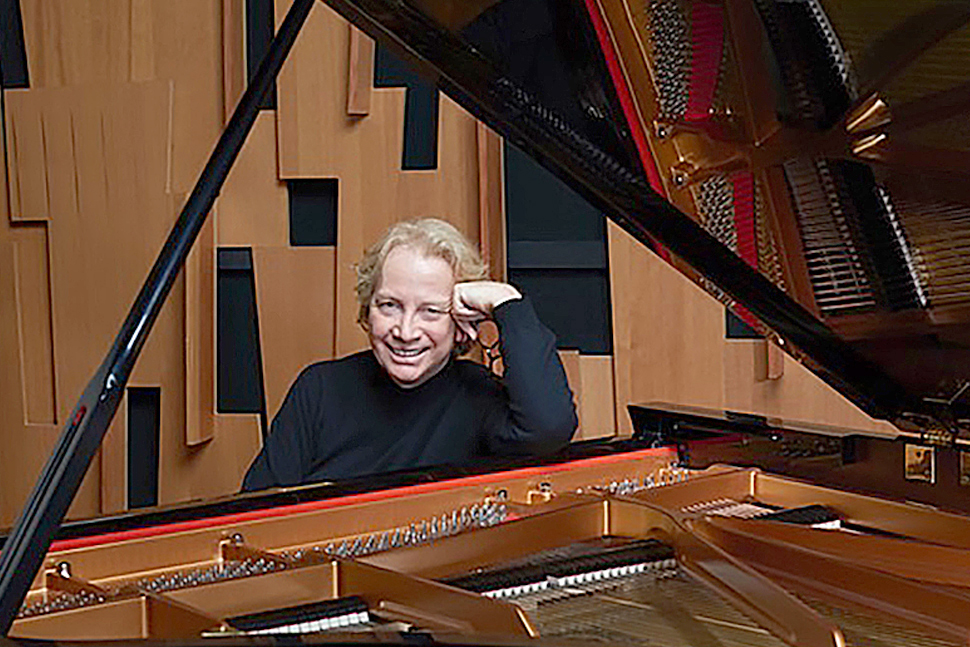Through February 18, students at Nassau Community College are performing award-winning playwright Aleshea Harris’ What To Send Up When It Goes Down at Little Theater, coinciding both with Black History Month and with ongoing challenges involving division, violence, and communication in our country.
Written for fewer than 10 actors, the work uses cumulative, climactic storytelling to confront these themes head on, creating “ritual theater that exposes the absurdity of racism through a series of interactive vignettes exploring the history and legacy of racially-motivated violence,” according to the publisher.
Ahead of opening night, Nassau Illustrated News spoke with director Danielle Criss and some of her students about what it’s been like to stage the unique work, and what they hope the audience can take away from this interactive experience.
Criss, also known as Dani Criss The Artist, is a cultural arts educator and an adjunct faculty member at Nassau Community College (NCC) with its Africana Studies as well as Theatre and Dance programs, whose focus includes creating curriculum for shared experiences.
“This work is essentially a ritual,” Criss explained in a phone interview. “It is an opportunity for healing. In the words of the playwright, this healing is ‘first and foremost’ for people of Black and Brown descent but with an understanding that we all, everyone in this world, needs to heal from the transgressions of anti-Blackness. We take the time to make space for the healing, honoring, and celebrating of the lives that have been lost because traditionally, in media reports, we hear about them as tragedies but we also have to remember these were real people who had real lives and real aspirations.”
“We’re taking the time to honor that, but also honor the fact that we are still in a continuum; we need to come together as a community, every single one of us, to heal together, to talk together, to understand that we all walk in different shoes. Also to laugh, and to grieve, and to move through all the emotions that you may be feeling,” Criss said.
“There are many ways that you can heal, and the intention of the ensemble is to be able to provide some resources for that to the community.” She continued, “It is not a traditional work by any means. It is very much uplifting these eight to nine performers, watching them work together, literally like a skeleton, to tell these stories… but also the beauty of that ensemble opening the space to the community or the audience, and creating interactive moments within the work so that it’s not a traditional proscenium-style or entertainment-style piece where folks are just coming to sit and watch [the student actors] perform; we’re asking folks to be prepared to participate, and to be prepared to understand that the experience is not just for the folks onstage but also anyone that’s a part of the opportunity.”
“We’re not forcing folks but we are inviting folks to participate, but they can also just be observers and supporters of what is happening. It is for all, and there will be many levels to this work, but the intention is for the sake of the growth of the community.”
Criss also noted, “We have a strong ensemble of students who are eager to share this work, who have been working hard with one another, and specifically uplifting this element of being an ensemble.”
“I like to call anybody that I work with an ensemble, versus a cast, because that means you’re just portraying something,” she said. “I want whoever I’m working with to undergo an experience, so with this ensemble and especially the nature of this work, it’s important for them to feel brave to create something with an audience they may or may not know, and to grow a trust and a love for each other.”
“My favorite part of the journey is when they really realize the meaning of that word, and this week [ahead of opening night] is the time when they’re really leaning into ‘ensemble.’”
Anaya Isaacs, Stage Manager and Gallery Coordinator at NCC’s Little Theater, commented on the piece, “I find myself intimately connected to the celebration of life and the profound honoring of martyrs. As an African American woman, these tragedies are woven into the fabric of my cultural identity, and the overwhelming exposure has sometimes led to a numbing effect. Yet, this production has stirred in me a profound willingness to confront and embrace those facets of my heritage with a deep sense of love. I believe this play serves as a poignant initiative to confront the audience with these stark realities… Above all, the production prompts us to engage in collective introspection, fostering a broader understanding of this global issue and encouraging a shared journey toward empathy and enlightenment. The play invites us to a profound exploration of the human experience, challenging assumptions and fostering connections through the celebration of life amidst the shadows of adversity.”
Sean Alvarez, who plays “Six”/“Miss,” commented by email, “One of my favorite aspects of this piece is its powerful exploration of themes such as racial injustice, identity, and the resilience of the Black community.”
“It’s important for [audiences] to know that the piece is a bold and unapologetic exploration of race, identity, and social justice. It challenges conventional theatrical norms and encourages active participation from the audience. They should be prepared to engage with difficult subject matter and to confront their own biases and privileges. Most importantly, they should come with an open mind and a willingness to listen, learn, and empathize with the experiences of others,” Alvarez wrote.
Rashawn McTootle, who plays “Five”/”Man,” also emphasized that What To Send Up When It Goes Down isn’t a “traditional” play. “There’s a lot of moving pieces between the audience and the cast and it’s almost like a farce. And the topics of conversation, although they can seem comedic at times, are very real and a very abstract way to highlight the issues of anti-blackness.”
Jaydin Washington, who portrays “Seven,” commented, “My favorite aspect of this piece would have to be the rhythm of the shush during the third movement. During that part you really feel the rhythm around you, and the rhythmic pattern of the shush creates a sense of tension and anticipation, drawing the audience deeper into the moment.”
Kaitlyn West, who portrays “Three,” noted, “My favorite aspect of this piece is definitely the large group ritual at the end. You really feel the stage come alive with energy and adrenaline and it just makes you want to get up and move … This is a story of love, grief, loss, and fear, and it is also the story of survival and resilience. Black people usually are not given the space to be raw and authentic, and I feel honored to be part of such an impactful and beautiful show like this.”
Darren Bowes, who plays “Two,” said, “What I want readers to know about the piece is that this is something very powerful and very deep, and that if you really pay attention we are going to touch your soul.”






